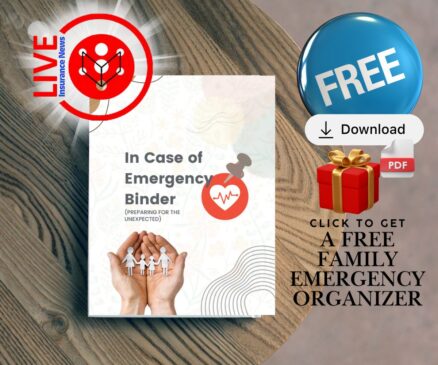You’re stuck in bumper-to-bumper traffic, and suddenly, a gleaming motorcycle glides by, weaving smoothly through the maze of cars. Ever wonder how much time those riders are actually saving? Turns out, a lot. Studies like one from Belgium suggest that even a 10% shift from cars to motorcycles can reduce traffic congestion by a whopping 40%. Imagine slashing your hour-long morning commute to just 40 minutes!
But before we get carried away with visions of breezing through traffic, there’s something riders and drivers alike need to remember: safety first. zipping through a jam-packed highway on two wheels does come with high risks, and it takes more than just skill to stay safe. It takes respect—from everyone sharing the road.
The Time-Saving Magic of Motorcycles
Motorcycles inherently handle traffic better than cars. They’re smaller, more agile, and quicker off the line when the light turns green. And in places where lane-splitting is legal (we see you, California), riders can shrink commute times significantly by moving between lanes of slow or stopped cars.
This also benefits car drivers, even if it isn’t immediately obvious. How? Fewer vehicles hogging lane space means smoother traffic flow overall. That’s why that Belgian study found eliminating congestion entirely would only require a 25% shift from cars to motorcycles. Fewer lines of cars crawling through intersections. Everyone gets home faster.
Chris Coleman, a seasoned motorcyclist who rides daily in Southern California, shared his story about commuting on one of the country’s most congested highway systems. “My 14-mile drive used to take 40 minutes in a car. On my motorcycle? Less than 20. Where traffic’s a parking lot, motorcycles are game-changers.”
Safety First, Always
But here comes the reality check. Riding a motorcycle is faster, yes. But it’s also riskier. According to transportation safety studies, motorcyclists are about 28 times more likely than car occupants to die in a crash per mile traveled. Sobering, isn’t it?
What can motorcyclists do to keep themselves safer when they’re zipping through traffic? Here are some tips every rider should live by:
-
Stay Visible
Ride where drivers can see you. Avoid sitting in blind spots, and always use your headlights—even during the day. Bright or reflective gear helps, too. -
Signal Clearly
This should be a no-brainer, but use your signals religiously. A simple flash of an indicator can prevent an accident before it even happens. -
Master Lane Positioning
A good rider knows when to stick to the center line and when to hug an edge. Carefully positioning yourself can help you avoid a car suddenly merging into your lane, especially in heavy traffic. -
Be Predictable
Weaving sharply without warning might save one second but could cost your life. Ride smooth. Keep your moves steady. -
Gear Up Every Ride
Helmets, gloves, boots, jackets. Every time. No exceptions. No one plans to crash, but if it happens, you’ll want every layer of protection possible.
And when in doubt, don’t take any chances, saving time is not that important in the scheme of things.
Respect Works Both Ways
Safety isn’t just the rider’s responsibility. Car drivers have a role to play, too. Ever been stuck behind a motorcycle waiting to turn and thought… “Why not just go already?” Patience matters. Motorcycles need extra space and time to maneuver safely. Cutting them off or tailgating increases the chance of an accident.
Oh, and when a motorcyclist waves a “thank you” because you gave them space to merge? That simple act of acknowledgment creates a bond. A silent agreement that we’re all just trying to get to work, school, or home safely. Those gestures build respect between riders and drivers, one small wave at a time.
Lane Splitting: Legal or Not? A Global Breakdown
The legality of motorcycles driving between cars, often called “lane splitting” or “filtering,” depends on where you are. Here’s a quick breakdown:
-
Legal in Some Places: In California, lane splitting is explicitly legal and even encouraged when done safely. Utah and Montana also allow a form of lane filtering under specific conditions.
-
Illegal in Most States: In the majority of U.S. states, lane splitting is not legal. Motorcyclists are expected to stay within their lane, just like cars.
-
Globally: Many countries, like the UK, Australia, and much of Europe, allow lane splitting or filtering, often considering it a practical way to reduce congestion.
Even where it’s legal, there are usually guidelines to ensure safety, like maintaining a reasonable speed difference and avoiding it in high-speed traffic. Always check your local laws before attempting it!
A Personal Story of Mutual Respect
Here’s one for you. I was stuck in a crawl on a two-lane road last spring. A motorcycle pulled up beside my car, clearly looking to merge ahead. I nodded and slowed down to give him room. A few minutes later, traffic opened up, and as he sped ahead, he turned, gave a big thumbs-up, and waved. Such a small act, but it stuck with me. I felt like we’d worked together in that chaotic mess, not against each other.
That’s the spirit we all need to adopt when sharing the road, especially in May, during Motorcycle Awareness Month.
It’s About Balance
At the end of the day, motorcycles are amazing tools for saving time and cutting through congestion. That Belgian study shows how much of a difference they can make when more of us swap four wheels for two. But riding isn’t just about speed; it’s about being smart, responsible, and respectful. Riders and drivers share the same roads, risks, and goals—to arrive safely.
So next time you hear the buzz of a motorcycle weaving through cars, don’t get annoyed. Instead, check your mirrors, give them a little extra room, and if they throw you a thank-you wave? Give one back. We’re all in this traffic together.


